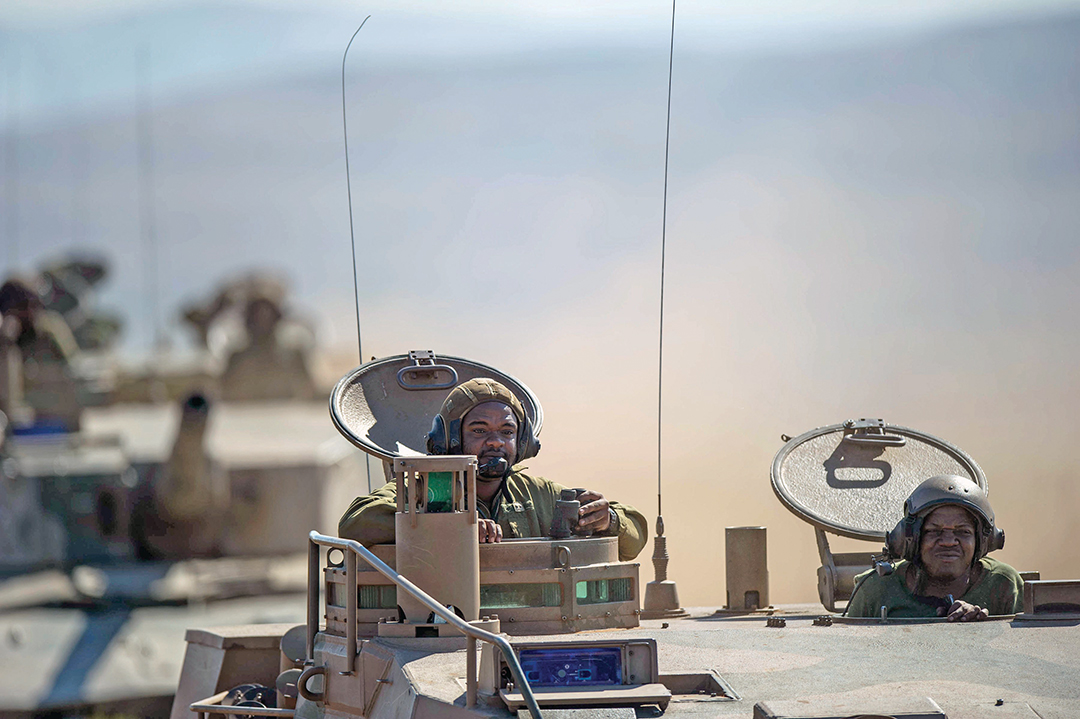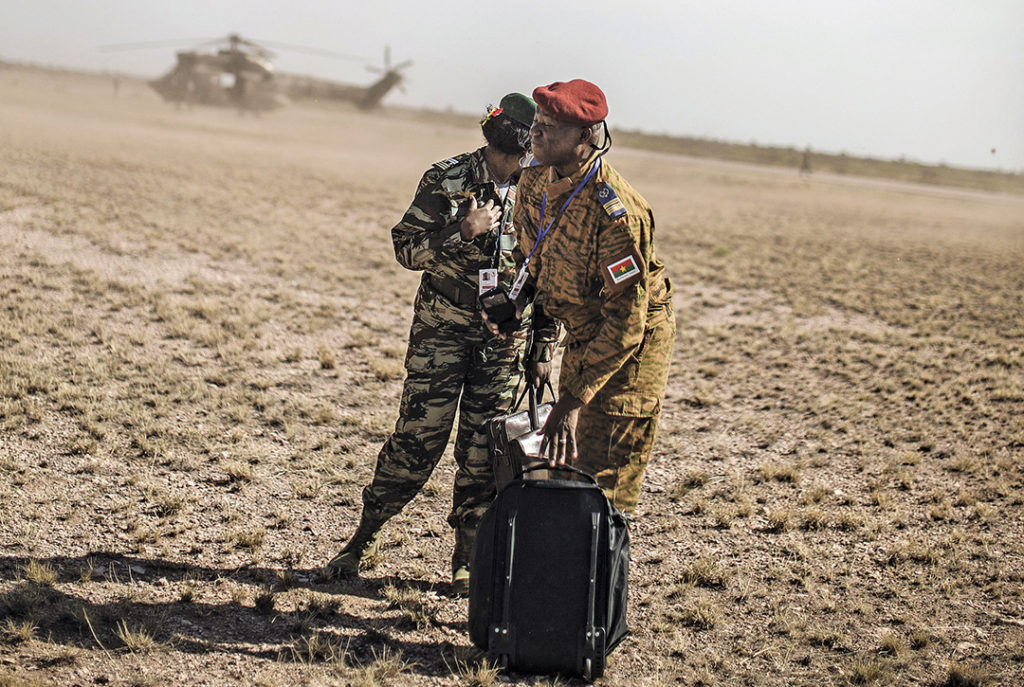The African Union Has a Logistics Plan to Quickly Put Troops Where They’re Needed Most
The African Union was created in 2001 with great hope, but also a heavy burden of responsibility. Member states were still reeling from the failure to rapidly intervene in the 1994 genocide in Rwanda, and they hoped that an African Standby Force (ASF) could offer a solution.
The AU developed the idea for the ASF in 2003 and founded it on two principles:
- Never again would African countries allow mass atrocities to occur on the continent without swiftly interceding.
- Interventions would be led by African countries on their own terms. The phrase “African solutions to African problems” has been widely repeated.
The ASF set a goal of intervening within 14 days in the event of a mass killing, one of the most aggressive peacekeeping timelines in the world. By contrast, the United Nations waits for a cease-fire and then gives itself 30 days to set up a traditional peacekeeping mission and 90 days to set up a multidimensional mission.
During the long process of creating the ASF, this noble goal has run headlong into reality. Leaders discovered that the will to intervene can be hampered by the challenge of moving troops swiftly to a conflict and sustaining them once they are in theater. Without dependable logistics and airlift options from Africa’s Regional Economic Communities (RECs), they found that good intentions are meaningless.

Mbow said the 14-day deployment timeline is achievable, but the real work must be done ahead of time.
“We put a lot of effort in what we call force preparation,” Mbow said. “We just don’t wait until the mandate is given, and then you are under pressure to deploy in 14 days. I think if you prepare everything, if you have our continental logistics base established, the regional economic communities and the regional forces ready, we have prepositioned logistics, communications is established, we have a database on the strategic lift capabilities, then I think the 14-day timeline is achievable. It’s a matter of being ready.”
Strategic lift
Building airlift capacity has long been a challenge in Africa. Aircraft suitable to perform the Rapid Deployment Capability of the ASF are expensive to purchase and to maintain. For example, an Antonov An-124 capable of carrying more than 136,000 kilograms of cargo costs $30 million or more and requires a large, reinforced airstrip and a team of trained mechanics to keep it airworthy.
But when it comes to the transportation of troops for a timely intervention, air movement is essential.
To address this need, the African Union has developed a strategic lift concept and established a cell within its Peace Support Operation Division called the Continental Movement Coordination Center (CMCC). The CMCC oversees REC-contributed airlift, short-term contract airlift, commercial sealift and land movement for peacekeeping operations at the strategic level. Additionally, the AU has begun to compile a database of continental air assets available through member nations to see where gaps and opportunities exist.
The work is already paying off. During Amani Africa II, a C-130H transport plane from Nigeria in the Economic Community of West African States region fulfilled an emergency airlift requirement by carrying 100 Soldiers and materiel from the Eastern African Standby Force. This example of airlift support negotiated by the CMCC in Addis Ababa, Ethiopia, demonstrated that, in the future, the AU Peace and Security Council can use this process to provide the ASF with resources from within the continent.
“What this concept is saying is that, as much as we can, we should use the African resources first and mutualize resources for strategic lift, which could be complemented by partner support,” Mbow said.
The ability to use continental resources was further affirmed during Amani Africa II when troops were flown in to South Africa by the air forces of Algeria and Angola.
Some have proposed the creation of something similar to the Movement Coordination Centre Europe (MCCE), which has 27 member nations that share air transport capabilities by purchasing space on the planes of partners when needed. This makes air resources available on short notice and ensures that nations with highly developed air forces are compensated for their contributions. U.S. European Command and U.S. Africa Command have recently negotiated an agreement to use the MCCE program for U.S. logistical support.

“I think there are solutions; there just needs to be a willingness to explore them and expend the resources,” Udoaka said. “It takes a regional approach for stuff like that to happen. The MCCE works because a bunch of countries signed on and said this is a smarter and more efficient way for us to get the airlift that we need.”
Continental Logistics Base
A concept first devised in 2009, the Continental Logistics Base (CLB) was intended to be a permanent storehouse of everything needed to launch an ASF mission, ranging from radio equipment to vehicles and tactical gear. Additionally, there would be regional logistics hubs in each of the continent’s five geographic regions.
Retired Brig. Gen. David Baburam of Kenya, former head of the Mission Support Unit at the AU, said this initial plan was a bit too much like “Cold War thinking” and needed to be scaled back. Now the CLB is envisioned to store “strategic deployment stocks,” which are items necessary for the establishment of a mission headquarters and for rapid deployment. Baburam said the CLB may also store donated equipment such as vehicles, generators and tents given by partner nations.
Progress is being made on the project. The AU signed a memorandum of understanding with Cameroon to host the CLB in the coastal city of Douala. Additionally, after a November 2015 technical assessment in Douala, the government of Cameroon agreed to improve facilities to meet AU needs. The CLB will have space at the Douala Air Force Base, a container terminal at the port, and a headquarters at the military engineering corps.
“In terms of preparation and setting up the base, we are quite close to the target,” Mbow said.
C3IS/Training
Timely logistics are not possible without effective communications. That is why the AU is setting up an integrated and interoperable command, control, communication and information system (C3IS). In a partnership with the European Union that began in 2013, the AU is installing a satellite communications system that allows ASF elements to send secure data, voice and video messages from the AU headquarters in Addis Ababa to peacekeeping mission headquarters and to regional headquarters. The system will include an IT component for mapping, sending orders to troops in the field and generating reports.
Mbow said Amani Africa II revealed some lingering communications problems, and he called for an exercise dedicated exclusively to command-and-control communications. He also highlighted the need for greater logistics training at the operational level at some of the continent’s centers of excellence, and tactical training inside the armies of each of the AU member states.
“We’re going to use the opportunity and the occasion of the African Logistics Forum, which will be organized in April [2016], to press upon the member states to really assist in focusing on increased logistics training,” Mbow said.
Funding
The biggest barrier to the AU’s peacekeeping efforts is the lack of consistent internal funding. The annual budget of the African Union Mission in Somalia (AMISOM), for example, is $500 million to $600 million, and only about 2 percent comes from the AU.
“The lack of a reliable source of funding really constrains you in the way you can plan,” Baburam said. “Because you can always say, ‘I want so much,’ but you cannot say how you are going to resource the requirement.”
The AU is supposed to pay for ASF missions through its Peace Fund. That is financed partially from the AU budget and partially on a voluntary basis and is “chronically underfunded,” according to Baburam.
Baburam said the goal should be to have a consistent fund of $50 million, which would allow the AU to support the first 90 days of a peacekeeping mission. In 2013, a high-level AU panel chaired by former Nigerian President Olusegun Obasanjo proposed a $10 tax on air travel and a $2 tax on hotel stays to help fund the AU’s effort. In 2015, 54 leaders agreed to the new taxes at the AU Heads of State Summit.
In January 2016, Dr. Nkosazana Dlamini-Zuma, the AU chairwoman, appointed Dr. Donald Kaberuka, a Rwandan economist and former president of the African Development Bank, as the AU’s high representative for the Peace Fund, with the primary objective of finding consistent and reliable support for the fund.
Logistics in an African Context
Although it is common to hear complaints about the planes, hardware and funding that African militaries lack, little time is spent appreciating the areas in which African militaries excel logistically. Time and time again in recent decades, peacekeepers have deployed across difficult terrain to austere climates and sustained themselves with limited means. In 2012, for example, contingents from the Chadian military drove 3,000 kilometers to Mali to fight al-Qaida-linked terror cells in one of the most desolate places in the world, the Adrar des Ifoghas Mountains. Observers remarked that few militaries could move that far that fast and withstand such harsh conditions.
Dr. Cedric de Coning, a South African security expert and advisor to the African Centre for the Constructive Resolution of Disputes, said the advantage of African peacekeeping forces is their willingness to deploy quickly and without all the frills and niceties that U.N. missions require. He believes AU logistics should strive to preserve this advantage. “The reason that the African Union or the African troops can deploy faster than the United Nations is because they don’t have all the standards and rules and bureaucracies in place that the U.N. or the EU has,” de Coning told ADF in a 2015 interview. He added: “The comparative advantage of the AU and all the African countries is that they can deploy fast, and they’re willing to be more robust.”
Mbow also stressed the need for the AU logistics plan to fit a uniquely African style. “When it comes to the scale of support and standards, we should have our own standards, which may not be the same as the U.S. or European countries,” he said.
He pointed out that, in the case of Chad, the logistics had to match the mission and the speed of the fighting force.
“If you look at the operational tempo and the way they fight against terrorism, you need to have logistics that is adapted to that type of operation. So adaptation is extremely important,” he said. “How we deliver water, fuel, how we do our maintenance to adapt to the high operational tempo [is important]. I can tell you actually that all the operations that we are conducting like AMISOM or other peace support operations in Africa are high-intensity operations.”

